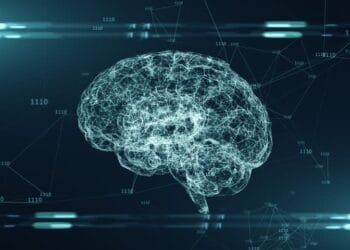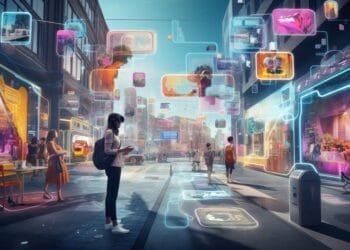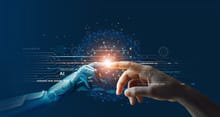Artificial intelligence (AI) is no longer a futuristic concept but a present-day reality, fundamentally reshaping every facet of human endeavor. From automating mundane tasks to powering complex decision-making, AI’s influence is pervasive, driving unprecedented efficiencies and opening doors to innovative solutions across diverse sectors. This comprehensive article delves into the profound impact of AI on various industries, exploring its current applications, future potential, and the challenges that accompany this technological revolution.
The Dawn of a New Era
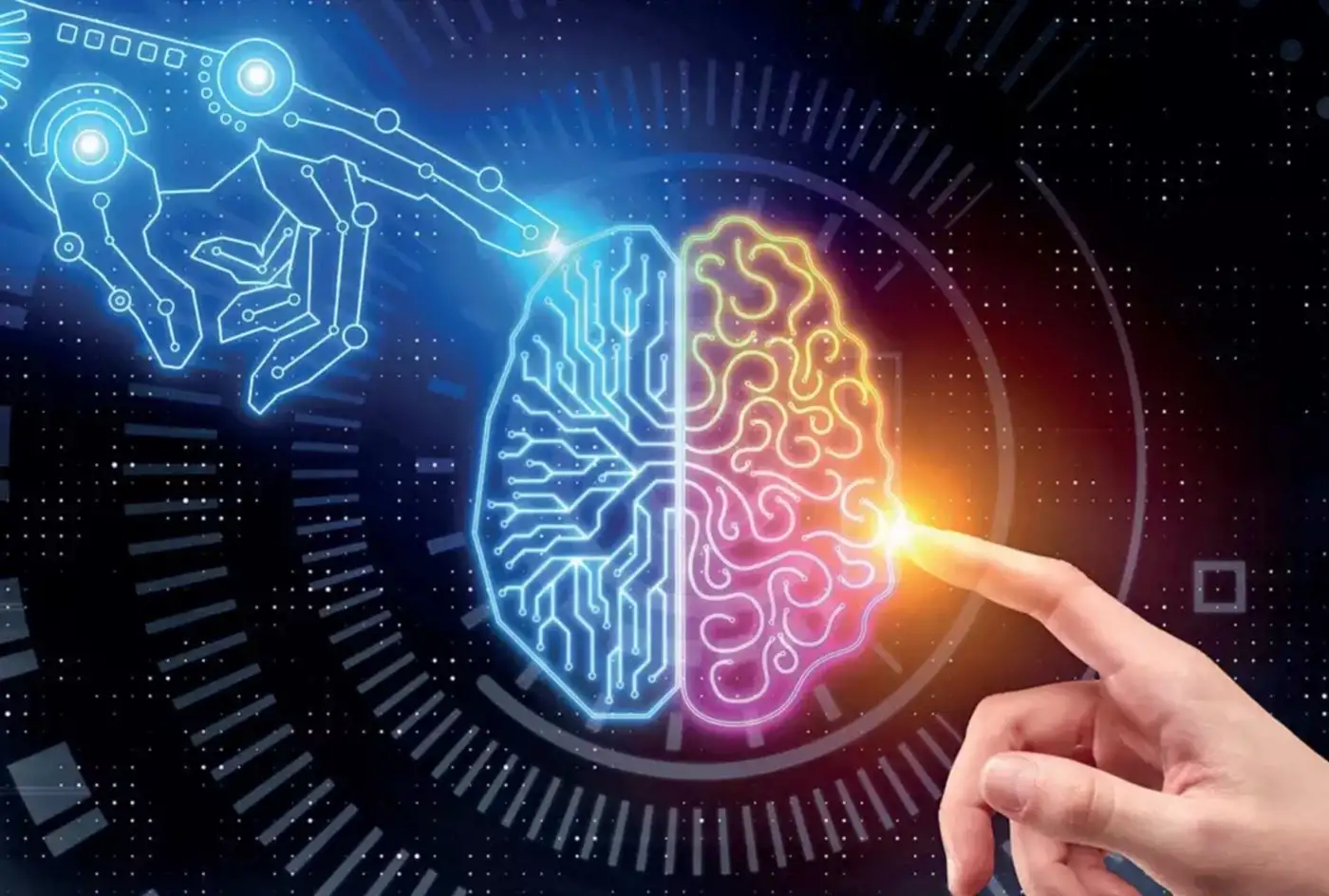
At its core, artificial intelligence refers to the simulation of human intelligence in machines that are programmed to think like humans and mimic their actions. The term can also be applied to any machine that exhibits traits associated with a human mind, such as learning and problem-solving. This broad definition encompasses several subfields, including:
- Machine Learning (ML): A subset of AI that allows systems to learn from data, identify patterns, and make decisions with minimal human intervention. This is the driving force behind many of the AI applications we see today, from personalized recommendations to fraud detection.
- Deep Learning (DL): A more advanced form of ML that uses neural networks with multiple layers (hence “deep”) to learn complex patterns in data. DL excels in tasks like image recognition, natural language processing, and speech synthesis.
- Natural Language Processing (NLP): Enables computers to understand, interpret, and generate human language. NLP is crucial for chatbots, language translation tools, and sentiment analysis.
- Computer Vision (CV): Equips computers with the ability to “see” and interpret visual information from the real world. This technology is vital for autonomous vehicles, facial recognition, and medical imaging analysis.
- Robotics: Involves the design, construction, operation, and use of robots. While not exclusively an AI field, modern robotics heavily relies on AI for perception, navigation, and decision-making.
The rapid advancements in computing power, the availability of vast datasets, and sophisticated algorithms have propelled AI from academic research into mainstream applications, sparking a global technological renaissance.
AI’s Impact Across Key Industries
The transformative power of AI is evident across a multitude of industries, each experiencing significant shifts in operations, customer engagement, and competitive landscapes.
A. Healthcare
The healthcare sector is undergoing a profound metamorphosis thanks to AI, promising a future of more personalized, efficient, and accessible medical care.
- Diagnosis and Treatment: AI algorithms can analyze vast amounts of medical data, including patient records, genetic information, and medical images, to assist in the early and accurate diagnosis of diseases like cancer, diabetes, and cardiovascular conditions. Machine learning models can identify subtle patterns that human eyes might miss, leading to earlier interventions and better patient outcomes. For instance, AI-powered tools can detect anomalies in X-rays, MRIs, and CT scans with remarkable precision.
- Drug Discovery and Development: The traditional process of drug discovery is incredibly time-consuming and expensive. AI is accelerating this by identifying potential drug candidates, predicting their efficacy and toxicity, and optimizing clinical trial designs. This significantly reduces the time and cost associated with bringing new medications to market, potentially leading to breakthroughs in treating previously incurable diseases. AI can also analyze existing drug compounds for new therapeutic uses, a process known as drug repurposing.
- Personalized Medicine: AI enables highly personalized treatment plans tailored to an individual’s genetic makeup, lifestyle, and disease profile. By analyzing a patient’s unique data, AI can predict how they will respond to different treatments, allowing doctors to select the most effective therapies and minimize adverse reactions.
- Patient Management and Monitoring: AI-powered wearable devices and remote monitoring systems can continuously track vital signs, activity levels, and medication adherence. This allows for proactive intervention in case of deteriorating health and reduces the need for frequent hospital visits, especially for chronic disease management. AI-driven chatbots and virtual assistants can also provide initial triage, answer patient queries, and schedule appointments, easing the burden on healthcare professionals.
- Administrative Efficiency: AI automates repetitive administrative tasks such as medical coding, billing, and scheduling, freeing up healthcare staff to focus on patient care. Predictive analytics can optimize hospital resource allocation, reduce wait times, and improve overall operational efficiency.
B. Finance
The financial industry, traditionally cautious, has embraced AI to enhance security, personalize services, and refine risk assessment.
- Fraud Detection: AI algorithms are exceptionally adept at identifying fraudulent transactions in real-time by analyzing vast datasets of historical transactions and recognizing anomalous patterns. This protects both financial institutions and their customers from significant losses. Machine learning models can detect even sophisticated fraud schemes that evade traditional rule-based systems.
- Algorithmic Trading: AI-powered algorithms execute trades at high speeds, optimizing portfolios and capitalizing on market fluctuations with precision that human traders cannot match. These systems analyze market data, news, and economic indicators to make rapid, informed trading decisions.
- Personalized Financial Advice: Robo-advisors, powered by AI, provide automated, data-driven financial advice and portfolio management services tailored to individual investor goals and risk tolerance. This makes financial planning more accessible and affordable for a wider range of clients.
- Credit Scoring and Loan Underwriting: AI enhances the accuracy of credit scoring by analyzing a broader range of data points beyond traditional credit history, including transactional behavior and digital footprint. This allows for more precise risk assessment and expands access to credit for underserved populations.
- Customer Service: AI-powered chatbots handle routine customer inquiries, resolve common issues, and provide instant support, improving customer satisfaction and reducing call center workloads. These bots can answer questions about account balances, transaction history, and product information around the clock.
C. Retail
AI is revolutionizing the retail experience, moving beyond traditional sales to create highly personalized customer journeys and streamlined operations.
- Personalized Recommendations: AI algorithms analyze customer Browse history, purchase patterns, and preferences to provide highly personalized product recommendations, significantly enhancing the shopping experience and driving sales. This is evident in e-commerce platforms like Amazon and Netflix, where AI suggests products or content relevant to individual users.
- Inventory Management: AI predicts demand fluctuations with greater accuracy, allowing retailers to optimize inventory levels, reduce waste, and prevent stockouts. This minimizes carrying costs and ensures products are available when customers want them.
- Dynamic Pricing: AI enables real-time price adjustments based on demand, competitor pricing, and market conditions, maximizing revenue and competitiveness. This is particularly useful for perishable goods or products with fluctuating demand.
- Customer Service and Chatbots: AI-powered chatbots provide instant support, answer product questions, assist with returns, and guide customers through the purchasing process, offering 24/7 assistance and improving customer satisfaction.
- Supply Chain Optimization: AI analyzes complex supply chain data to optimize logistics, route planning, and warehouse operations, leading to faster delivery times and reduced operational costs. Predictive analytics can anticipate disruptions and suggest alternative solutions.
D. Manufacturing
The manufacturing sector is leveraging AI to achieve unprecedented levels of automation, precision, and efficiency, leading to significant cost reductions and improved product quality.
- Robotics and Automation: AI-powered robots perform complex manufacturing tasks with high precision and speed, often in hazardous environments, improving safety and production efficiency. These robots can learn from experience and adapt to changing production requirements.
- Quality Control: Computer vision systems, powered by AI, inspect products for defects with meticulous accuracy, far surpassing human capabilities. This ensures consistent product quality and reduces waste from faulty items. AI can identify even microscopic flaws that would be invisible to the human eye.
- Predictive Maintenance: AI algorithms analyze data from machinery sensors to predict equipment failures before they occur, enabling proactive maintenance and minimizing costly downtime. This shifts maintenance from a reactive to a proactive approach, significantly extending equipment lifespan.
- Supply Chain Optimization: AI optimizes the entire manufacturing supply chain, from raw material procurement to product delivery, by predicting demand, managing inventory, and streamlining logistics. This ensures a smooth flow of materials and products, reducing bottlenecks.
- Generative Design: AI can explore thousands of design variations for products and components, optimizing them for performance, cost, and manufacturability. This accelerates the design process and leads to innovative solutions.
E. Transportation and Logistics
AI is at the forefront of transforming transportation, promising safer roads, more efficient logistics, and the eventual widespread adoption of autonomous vehicles.
- Autonomous Vehicles: Self-driving cars, trucks, and drones, powered by sophisticated AI algorithms, are designed to navigate, perceive their surroundings, and make decisions without human intervention, promising increased safety and efficiency in transportation. This technology relies heavily on computer vision, sensor fusion, and reinforcement learning.
- Traffic Management: AI systems analyze real-time traffic data to optimize traffic flow, reduce congestion, and provide intelligent routing suggestions, leading to shorter travel times and reduced fuel consumption. This can involve dynamic signal timing and predictive modeling of traffic patterns.
- Logistics and Route Optimization: AI optimizes delivery routes, manages fleet scheduling, and predicts potential delays, leading to significant cost savings and improved delivery times for logistics companies. This is particularly crucial for e-commerce and last-mile delivery services.
- Predictive Maintenance for Vehicles: AI monitors vehicle performance and identifies potential mechanical issues before they escalate, enabling proactive maintenance and reducing breakdowns, ensuring safer and more reliable transportation.
- Ride-Sharing and Public Transit Optimization: AI algorithms optimize ride-sharing matching, dynamic pricing, and public transit schedules to improve efficiency, reduce wait times, and enhance the overall user experience.
F. Education
AI is poised to revolutionize the education sector by personalizing learning experiences and streamlining administrative tasks.
- Personalized Learning Paths: AI-powered platforms adapt to individual student learning styles, paces, and strengths, providing customized content, exercises, and feedback. This ensures that each student receives an education tailored to their specific needs, enhancing engagement and retention.
- Intelligent Tutoring Systems: AI tutors can provide one-on-one support, answer questions, explain complex concepts, and offer targeted feedback, supplementing traditional classroom instruction. These systems can identify areas where students struggle and provide additional resources.
- Automated Grading: AI can automate the grading of objective assessments, essays, and even some creative assignments, freeing up educators’ time to focus on more complex pedagogical tasks and personalized student interaction.
- Content Creation and Curation: AI tools can assist in generating educational content, quizzes, and summaries, and also curate relevant learning resources from vast online repositories, making it easier for educators to build engaging curricula.
- Administrative Efficiency: AI can automate tasks such as student enrollment, scheduling, attendance tracking, and resource allocation, improving the operational efficiency of educational institutions. Predictive analytics can also identify students at risk of falling behind and enable early intervention.
G. Agriculture
AI is bringing a new era of “smart farming,” optimizing resource usage and enhancing crop yields.
- Precision Agriculture: AI-powered drones and sensors collect detailed data on soil conditions, crop health, and weather patterns. This data is then analyzed to provide precise recommendations for irrigation, fertilization, and pest control, optimizing resource usage and increasing yields.
- Crop Monitoring and Yield Prediction: Computer vision and machine learning models analyze images from drones and satellites to monitor crop growth, identify diseases or pests early, and predict harvest yields with greater accuracy, enabling better planning.
- Automated Harvesting: AI-driven robots are being developed to perform automated harvesting of delicate crops, reducing labor costs and minimizing damage.
- Livestock Monitoring: AI-powered sensors can track the health, behavior, and location of livestock, helping farmers monitor animal well-being, detect early signs of disease, and optimize feeding schedules.
- Water and Nutrient Management: AI optimizes the use of water and nutrients by analyzing real-time data from the field, ensuring that plants receive exactly what they need, when they need it, minimizing waste and environmental impact.
H. Energy and Utilities
AI is playing a crucial role in optimizing energy consumption, enhancing grid stability, and accelerating the transition to renewable energy sources.
- Smart Grid Management: AI optimizes the distribution of electricity, predicts demand fluctuations, and integrates renewable energy sources into the grid more efficiently, ensuring stable and reliable power supply.
- Predictive Maintenance for Infrastructure: AI analyzes data from power plants, pipelines, and transmission lines to predict equipment failures, allowing for proactive maintenance and preventing costly outages.
- Renewable Energy Optimization: AI helps forecast renewable energy output (e.g., solar and wind) based on weather patterns, optimizing their integration into the grid and reducing reliance on fossil fuels.
- Energy Consumption Optimization: AI-powered systems analyze energy consumption patterns in buildings and industrial facilities, identifying inefficiencies and recommending strategies for energy conservation, leading to significant cost savings and reduced carbon footprint.
- Resource Exploration: AI assists in the exploration for new energy resources by analyzing vast geological datasets and identifying promising sites with higher accuracy.
The Future Landscape
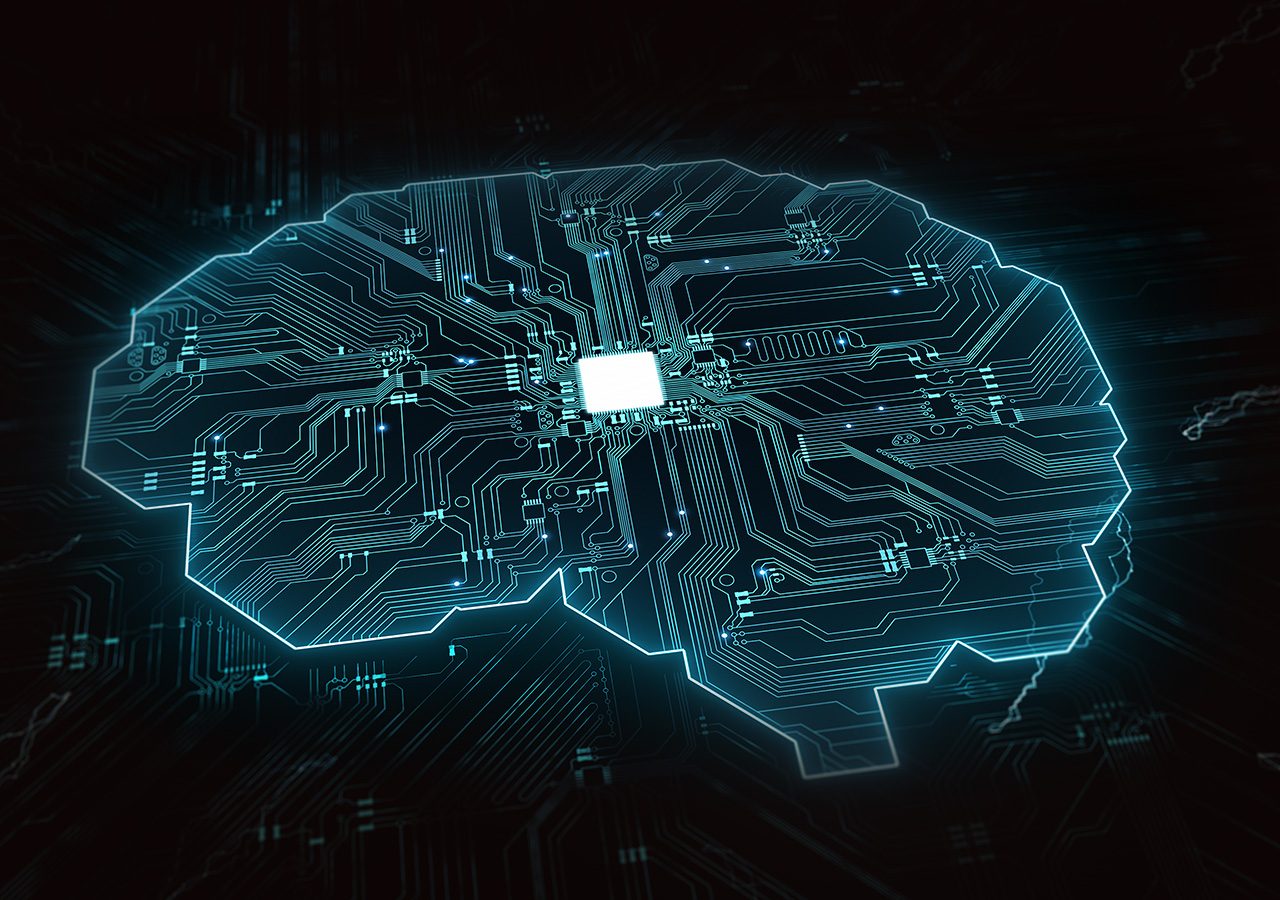
The current applications of AI are merely the tip of the iceberg. The future promises even more profound transformations as AI technologies continue to evolve.
- Generative AI: Beyond merely analyzing data, generative AI models can create new, realistic data, including images, text, audio, and even complex designs. This has massive implications for content creation, product design, and simulation.
- Explainable AI (XAI): As AI systems become more complex, understanding their decision-making process becomes critical, especially in sensitive areas like healthcare and finance. XAI aims to make AI models more transparent and interpretable.
- AI Ethics and Regulation: As AI becomes more powerful, addressing ethical concerns related to bias, privacy, and accountability will be paramount. Governments and organizations worldwide are developing frameworks and regulations to ensure responsible AI development and deployment.
- Human-AI Collaboration: The future isn’t about AI replacing humans entirely, but rather about creating powerful synergies where AI augments human capabilities, allowing us to achieve more than ever before. This collaboration will lead to new roles and innovative solutions.
- Edge AI: Processing AI on devices themselves (at the “edge” of the network) rather than in the cloud will lead to faster response times, enhanced privacy, and reduced bandwidth requirements, enabling new applications in IoT and autonomous systems.
Challenges and Considerations in AI Adoption
Despite its immense potential, the widespread adoption of AI presents several challenges that need to be addressed:
- Data Quality and Availability: AI models are only as good as the data they are trained on. Poor quality, biased, or insufficient data can lead to inaccurate or unfair outcomes.
- Ethical Concerns and Bias: AI systems can perpetuate and even amplify existing societal biases if the training data reflects those biases. Ensuring fairness, transparency, and accountability in AI is a critical challenge.
- Job Displacement: While AI creates new jobs, it will undoubtedly automate some existing ones, leading to concerns about job displacement and the need for workforce reskilling and upskilling.
- Security and Privacy: AI systems handle vast amounts of sensitive data, making them targets for cyberattacks. Ensuring the security and privacy of this data is paramount.
- Complexity and Explainability: Many advanced AI models, particularly deep learning networks, are “black boxes,” making it difficult to understand how they arrive at their decisions. This lack of explainability can be a barrier to trust and adoption in critical applications.
- Integration and Infrastructure: Integrating AI solutions into existing legacy systems can be complex and require significant investment in infrastructure and technical expertise.
- Regulatory Frameworks: The rapid pace of AI development often outstrips the ability of regulatory bodies to keep up, leading to a need for agile and adaptive legal frameworks.
Conclusion
Artificial intelligence is unequivocally transforming industries, driving innovation, and reshaping the global economy. Its ability to process vast amounts of data, identify complex patterns, and automate intricate tasks is unlocking unprecedented efficiencies and creating new opportunities across every sector. From revolutionizing healthcare and finance to personalizing retail and optimizing manufacturing, AI’s impact is undeniable and continues to expand at an astonishing pace.
While the benefits are immense, it is crucial to navigate this revolution responsibly. Addressing ethical considerations, ensuring data privacy, and preparing the workforce for an AI-powered future are paramount. By fostering collaboration between researchers, policymakers, businesses, and society at large, we can harness the full potential of AI to create a more efficient, equitable, and prosperous world. The journey of AI is an ongoing one, filled with immense possibilities, and its continued evolution promises to redefine what is achievable across all industries.

